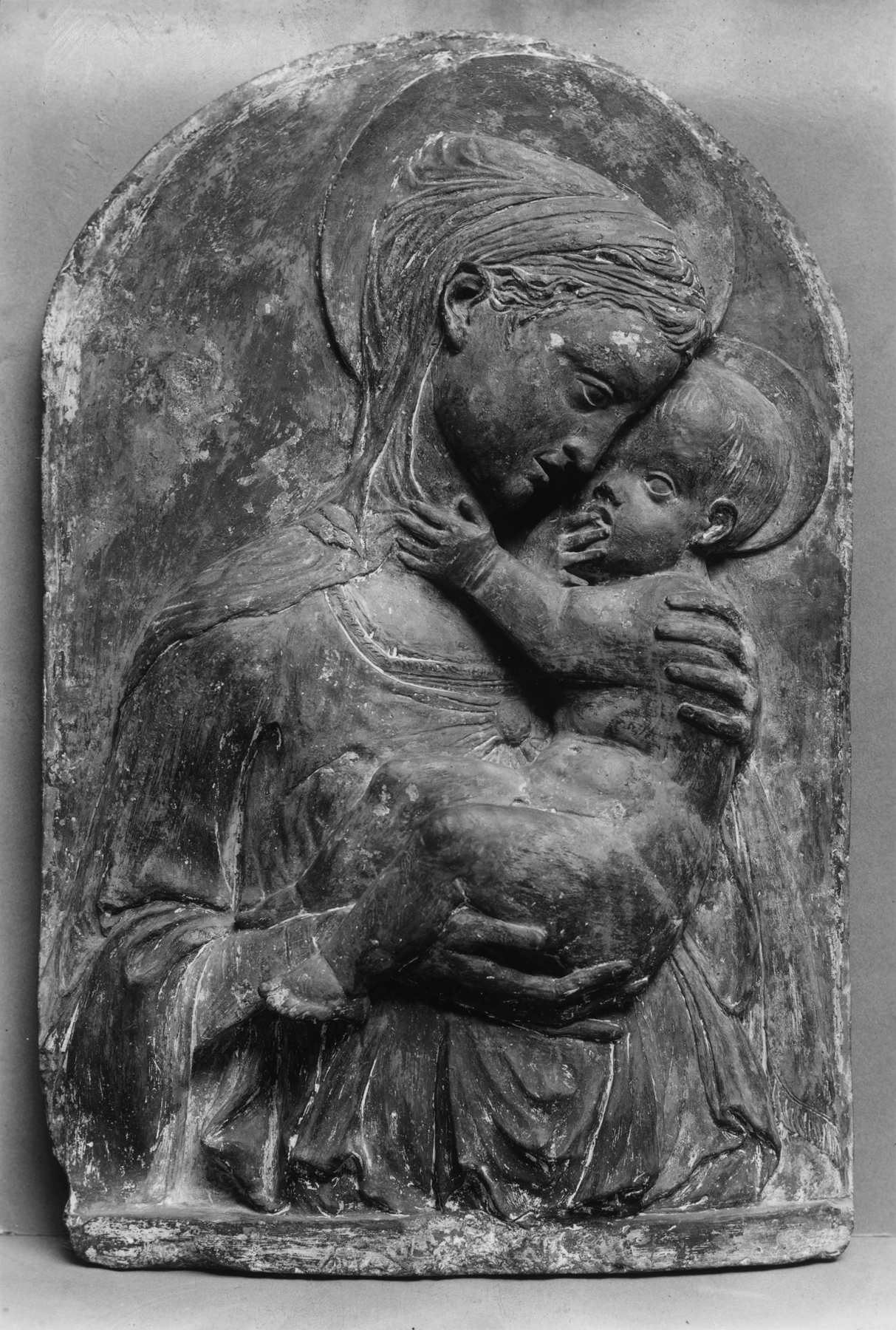Virgin and Child
(Renaissance Europe )
This carved terracotta sculpture was formerly polychromed. Pieces are chipped off such as the finger of the child. The piece is said to have been removed from the Convent of the Capucins at Padua at the time of the suppression to the Convent of the Oratorio of the Guidecca at Venice.
Provenance
Provenance (from the French provenir, 'to come from/forth') is the chronology of the ownership, custody, or location of a historical object. Learn more about provenance at the Walters.
Convent of the Cappuchins, Padua; Oratorio della Guidecca, Venice, 1810 [removed from the Convent of the Cappuchins]; Raoul Heilbronner, Paris [date of acquisition unknown], by purchase; Henry Walters, Baltimore, 1909, by purchase, Walters Art Museum, 1931, by bequest.
Geographies
Italy, Padua, Convent of the Cappuchins
(Place of Origin)
Italy, Venice, Convent of the Oratorio of the Guidecca (Place of Discovery)
Measurements
H: 32 5/16 x W: 21 1/4 in. (82 x 54 cm)
Credit Line
Acquired by Henry Walters, 1909
Location in Museum
Not on view
Accession Number
In libraries, galleries, museums, and archives, an accession number is a unique identifier assigned to each object in the collection.
In libraries, galleries, museums, and archives, an accession number is a unique identifier assigned to each object in the collection.
27.196


